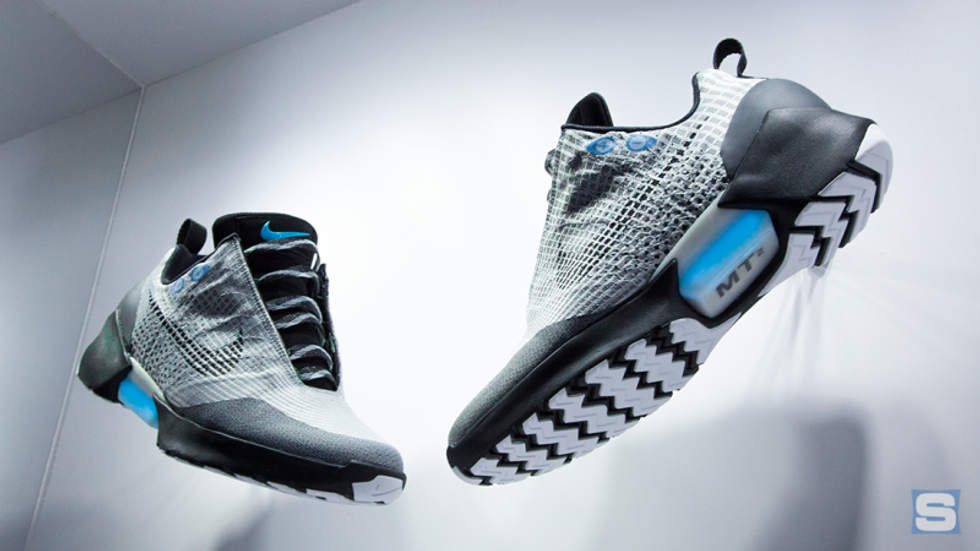About 11 months ago, Nike unveiled the shoes of legend: the self-tying Nike Mags. They were revealed on "Back to the Future" Day on the feet of the man himself, Michael J. Fox also known as Marty McFly. The actor simply pressed a button and the shoes whirred to life, tightening around his foot until he felt they were adequately laced.
I was truly excited for what the release of those sneakers could mean for the sneaker community, and the future of footwear in general, as you can read in my article about the Nike Mag 2015 release. However, my excitement died down as time went on and I heard nothing about self-tying laces. I didn't even hear much about the Nike Mag release since the shoes were only available through auction and I definitely don't know anyone fortunate enough to be able to even attend said auction. So here, almost a year later, Nike has finally announced the possible beginning of the next era of sneaker technology: the commercial release of the self-tying Nike HyperAdapt 1.0.
The Nike HyperActive 1.0 is an impressive example of what modern technology is moving towards. Nylon bands that run through the shoe's sides and the tongue are the ones responsible for the lace tightening when the buttons are pressed. A blue light illuminates which indicates the shoe's motor is running. Since the shoes run on a battery, they do need to be plugged in. On the bright side, it only takes about 3 hours for the shoes to charge and the battery lasts for about two weeks. In a world where all of our devices need to be charged anyway, our shoes will be just another thing we have to plug up when we get home.
This is a huge step for the sneaker industry. Releasing this sort of technology on the commercial level really shows the growth and enhancement of Nike as well as sneaker mechanics. Self-tying laces were just a fantasy concept 30 years ago when Robert Zemeckis approached Tinker Hatfield at Nike about creating a futuristic shoe for his new movie. Now that concept has come to life and is about to be introduced to everyday people. The fact that a dream like this has been able to come true (with enough effort put into it to make the shoe actually work) means that this sort of technology will soon be what we can expect from our favorite sneaker companies. It will take some time, but the blending of technology and footwear is upon us.
The price for the HyperAdapt has yet to be announced, and many are assuming the sneakers are going to have a pretty hefty price tag. While this is understandable for such a groundbreaking shoe, I foresee a future where this won't be the case. The extremely limited release of the Nike Mags in 2015 was to show the general public that such technology was possible. The more commercial release of the HyperAdapt 1.0 will prove to serve as the stepping stone into the future.











































